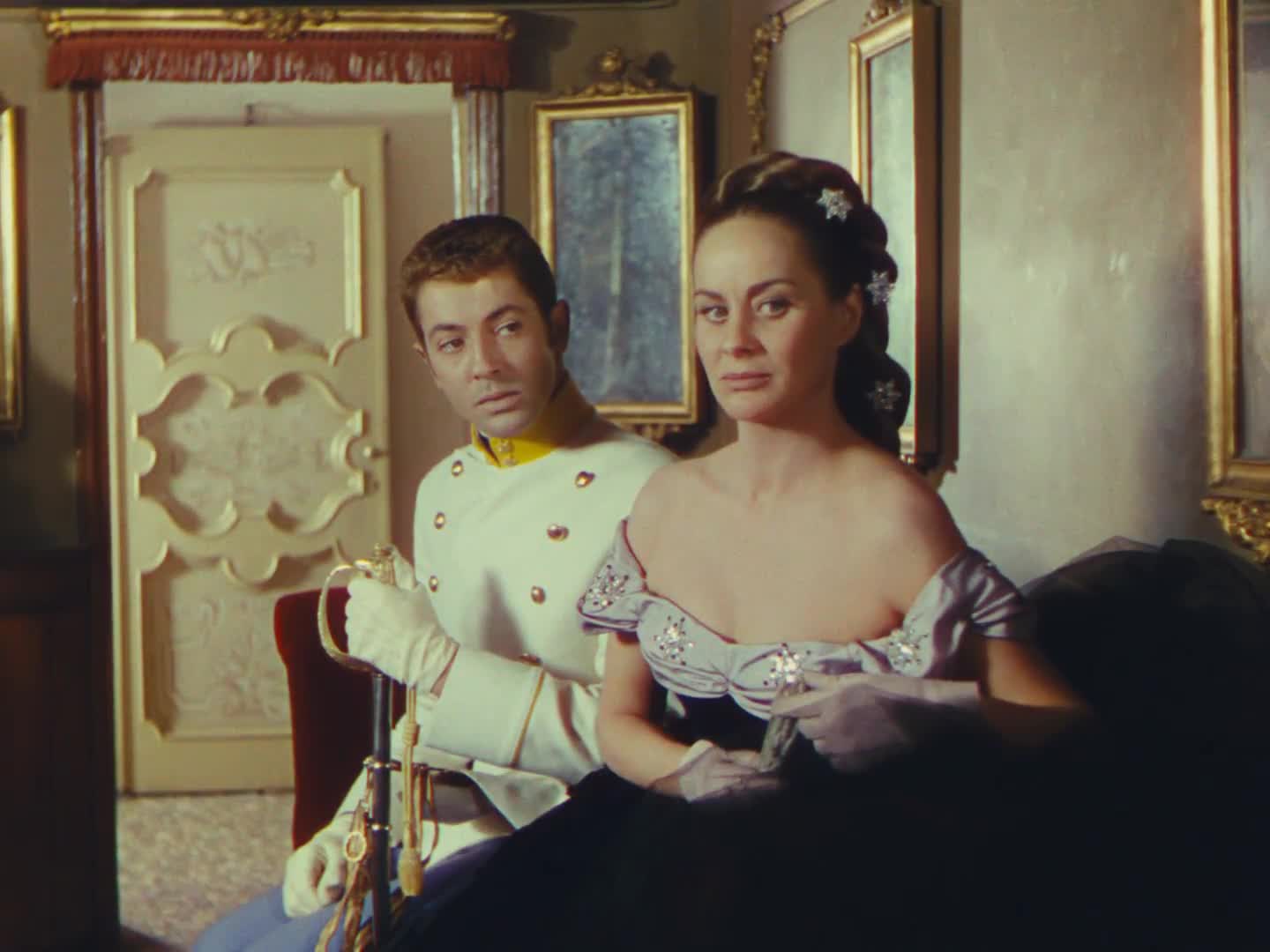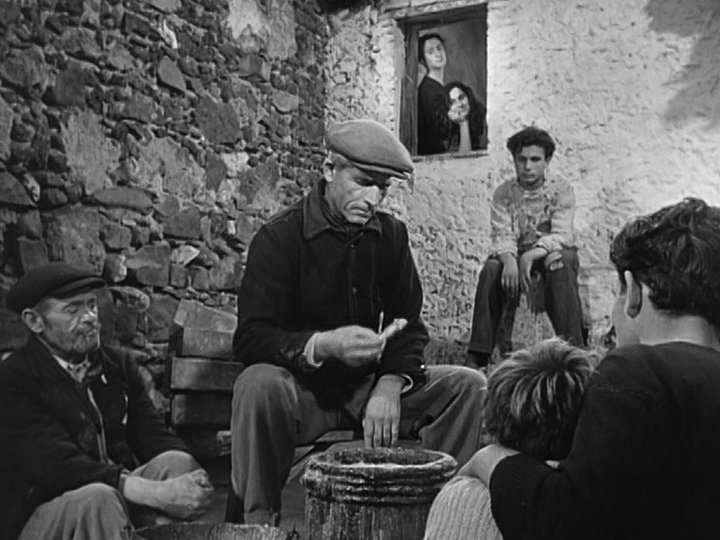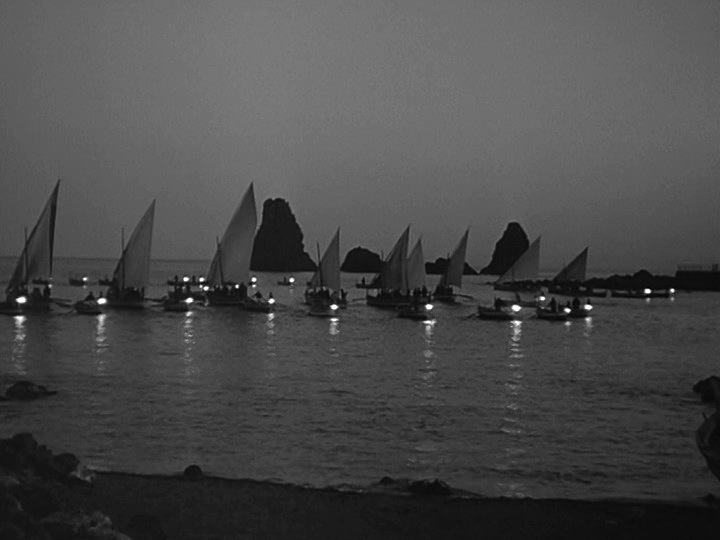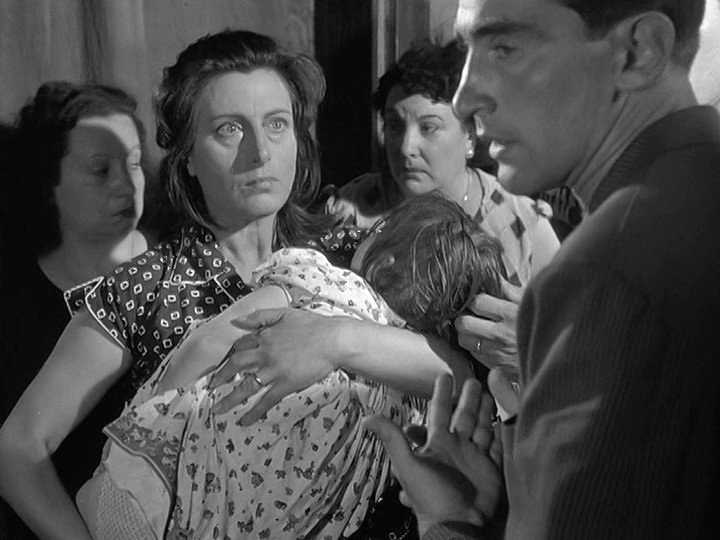Luchino Visconti is one of the most fascinating artists of Italian cinema. The child of Italian aristocracy, born in a Milan palazzo with a family title that went back centuries and a family fortune built on landholdings and industry, he embraced Marxism with the zeal of a revolutionary but channeled his activism into theater and cinema. He apprenticed as an assistant to Jean Renoir and, just as the ambitious young filmmakers of the French nouvelle vague would a decade later, wrote for a film journal that challenged the orthodoxy of the cinema of his day as a prologue to embarking on his own filmmaking career.
His reputation today rests largely on his beautifully sculpted his portraits of life in the aristocracy and the social world of the rich and titled in films like Senso (1954), The Leopard (1934) and Death in Venice (1971), worlds he knew intimately from his own life, yet he began his film career with a film that has been called by some the first masterpiece of neorealism. I think of Ossessione (1942), an unofficial adaptation of James M. Cain’s The Postman Always Rings Twice (in fact, he never secured the rights to the book), more precursor than neorealist exemplar, a shot across the bow of Italy’s cinema of distraction made under Mussolini’s rule. He defied censors with a tale of lust, adultery and hothouse passions among the working class, yet it was thanks to the political and social connections of his titled family that the film was even released in Mussolini’s Italy.
If Ossessione anticipates the movement, La terra trema (1948) is one of its defining films and greatest triumphs. Loosely inspired by the novel “I malavoglia” by Giovanni Verga, it is shot on location in the Sicilian fishing village of Aci Trezza, the town where Verga set his story, and cast entirely with non-professionals from the town itself. Visconti spent months in the town, developing the script and rewriting the dialogue with their input and suggestions. What began as a proposed short documentary funded by the Communist party transformed into a 160-minute epic of the lives of the impoverished fishermen of Sicily, trapped in a life that kept them poor, desperate and hopeless.
Unlike the neorealist films of contemporaries Roberto Rossellini and Vittorio De Sica, there isn’t a hint of the war that ravaged the rest of the country. It’s as if Sicily has existed in a bubble, unchanging for a century as sons take over the boats of their fathers and children apprentice at their feet, taking their place in “a hopeless slavery.” Yet the hallmarks of his future cinema are already apparent. The film opens with ringing of church bells to welcome the dawn. They don’t call the men to work, they announce their return from a night of fishing, and the film presents it as a holy ritual. The waterfront fills with merchants to buy the catch and Visconti trucks his camera through this mob as they argue and haggle with the same grace he will later bring to his gliding shots of grand balls and the social dance of the rich and entitled. And unlike the documentary scruffiness of Open City or the poetic simplicity and modesty of De Sica’s Bicycle Thieves, Visconti give the film a mythic grandeur. Low-angle shots and sculpted lighting pick out his working-class characters and imbue them with the same visual power and dignity as any aristocrat. The boats coming home from the sea, with the sunrise providing a dramatic backdrop to their toils, could be a returning army victorious from the wars. And it is a nightly battle. But where Verga presented the struggle between man and sea, Visconti frames it as an economic and social war. These people are trapped in a system that keeps them impoverished and offers little hope of escape.
Only Ntoni (Antonio Arcidiacono), the eldest son and the only member of the extended Velastro family who has seen something of the world (or at least Italy outside of Sicily) thanks to his tour of duty as a soldier, dares challenge the system of merchants colluding to pay a pittance for the nightly catch. He mortgages the family home so they can go into business for themselves, only to see everything collapse after a storm wipes out their investment. It’s no surprise that the merchants revel in the misery of the Velastro family—they don’t just want the Velastros to suffer for their defiance, they want to make them an object lesson to anyone else who might harbor such rebellious ideas—but the poor also turn their back on them, as if to punish them for daring to defy a way of life they take for granted and letting them dream of a better way. The political message is unmistakable, even if it is about tragedy and endurance rather than triumph. Ntoni comes to the realization that you can’t change anything with individual action. Only collective action can bring about change. Until then, it’s a matter of survival.
The dream of escaping working-class poverty also drives Visconti’s third feature, Bellisima (1951), though this is no political challenge to an oppressive system. Rather this is about ruthless competition to break into show business with Anna Magnani as the working-class woman turned aggressive stage mother pushing her child into a contest to find “the prettiest child in Rome.” The prize is a film role and a movie contract for the winning child and she has pinned all her hopes on this unlikely fantasy.
Bellisima has the look of a satire of show business dreams, but the desperation behind the dreams and the backdrop of everyday poverty and hustling to survive the hard times of 1951 Rome makes it more painfully wry than humorous. Visconti conducts and choreographs the chaos and the cacophony of the working class culture of Rome with the same exacting control he will later bring to recreations of high society rituals and events. Magnani gives a hearty, earthy, full-bodied performance as the most insistent voice breaking out of the chorus. She can be maddening, her will and her fantasies riding roughshod over good sense, but she is so alive and impassioned that you have to respect her determination and her love.
Bellisima isn’t Visconti’s final film about the working class—he would go on to make the powerful Rocco and his Brothers (1960), a family melodrama with a grand sweep and operatic emotions—but it is his farewell to the neorealist mode. His next film, the lavish, lush Senso (1954), finds Visconti in his natural world, where the passions of the ruling class play out against the march of history that takes no notice of their desires. And perhaps Visconti saw himself in characters intoxicated by the cries for revolution while living on inherited wealth and position. Visconti always felt like the odd man out, the wealthy Marxist and upper-class aesthete in the group of social realists and partisan rebels that defined the neorealist movement after the fall of Mussolini and Italian Fascism. Yet La Terra Trema and Bellisima are no less committed to portraying life in post-war Italy, and they do so with a power and beauty unique to Visconti’s sensibility.








